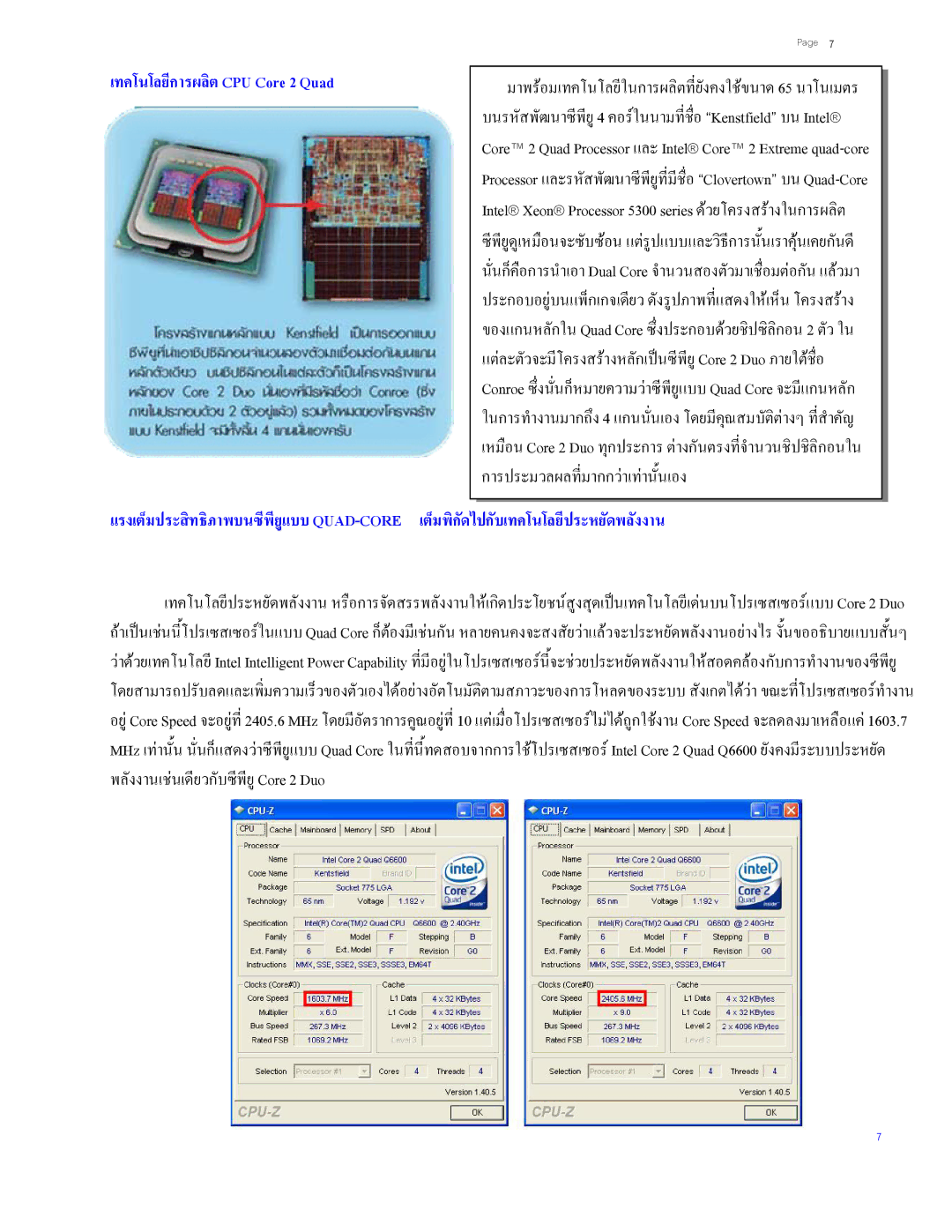Q6600 specifications
The Intel Core 2 Quad Q6600 is a notable processor that marked a significant step in computing performance when it was released. Launched in early 2007, it was part of Intel's Core 2 family and was one of the first quad-core desktop processors available to consumers.The Q6600 operates on a 65-nanometer manufacturing process, which was quite advanced for its time, allowing for more efficient power consumption and thermal management. The processor features a clock speed of 2.4 GHz and has a 1066 MHz front-side bus (FSB), enabling robust data transfer rates between the CPU and memory. With four cores, the Q6600 can effectively handle multitasking and parallel processing, making it an excellent choice for demanding applications such as video editing and gaming.
One of the standout features of the Q6600 is its 8 MB L2 cache, which provides high-speed access to frequently used data, enhancing overall system responsiveness. Its thermal design power (TDP) is rated at 105 watts, representing a balance between performance and energy efficiency. The processor is compatible with a wide range of motherboards, particularly those utilizing the Intel P35 chipset, which allows for broader options in terms of system configuration.
The Q6600 also supports Intel's Enhanced SpeedStep technology, which helps manage power consumption by dynamically adjusting the processor's voltage and frequency, providing a more energy-efficient performance profile during lighter workloads. This capability not only reduces electricity usage but also lowers heat output, allowing for quieter and cooler computing environments.
In terms of performance metrics, the Intel Q6600 was capable of competing effectively with its contemporaries, especially in multi-threaded applications. It gained a dedicated following among enthusiasts and budget-conscious consumers who wanted reliable performance without the high cost typically associated with newer processors.
Even today, while it may not be suitable for the latest software demands, the Q6600 remains a testament to a significant evolution in CPU technology, paving the way for more advanced multi-core processors. Its legacy can be seen in the widespread adoption of quad-core technology in modern computing.

